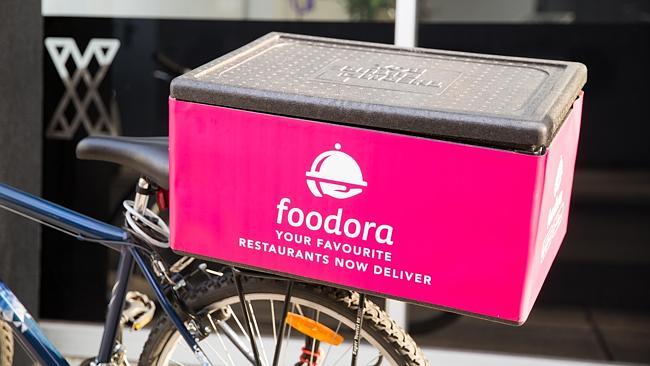Menulog, Foodora, UberEATS: apps in appetite deliver fine dining
If the number of operators is any guide, the restaurant delivery industry is booming.

Just how hooked are we on home-delivered food? I don’t mean just pizza or a Coles or Woolworths van delivering your groceries. I mean classy restaurant tucker ordered through an app and delivered for little more than the dine-in cost.
If the number of operators is any guide, the restaurant delivery industry is booming with start-up after start-up offering a service.
If I access Menulog through a browser or an app, I can access 505 specials available through 127 restaurants. Some are just down the road, others 3km or 4km away. Your selection arrives in 30 minutes to an hour depending on food preparation time and distance.
Choose Foodora and there are 17 restaurants offering me dishes in 35 to 50 minutes. I can have Australian, Chinese, Malaysian, Indian, Japanese, Turkish, Thai, Italian, Spanish or gourmet burgers. Foodora says you pay in-restaurant prices, with a $5 delivery charge for each restaurant you order from. Delivery is not just by car and motor scooter. In inner Sydney, bike paths are morphing into commerce lanes with pedal power seen as an efficient way to beat peak-hour traffic. Backpackers and students are exercising and making cash by delivering to you.
To me the restaurant experience — the ambience, the smells from the kitchen, the service — is an essential part of enjoying great food, as is a good wine and company. A home-delivered $30 gourmet steak meal in a plastic container doesn’t cut it — for me, at least.
But the food delivery app business faces a shake-up. Last year Berlin-based Foodora snapped up Australian delivery service Suppertime. And Foodora, which operates in more than a dozen countries, was acquired by another Berlin-based company, Delivery Hero, which operates in 29 countries. Foodora merged with Urban Taste.
Rocket International’s Delivery Hero is regarded as one of the fastest growing start-ups. It is retaining the Foodara branding, at least here in Australia.
The stage is set for a showdown between Rocket International and Uber, which has confirmed it will launch its own delivery service, UberEATS, in Australia soon.
“We’re really excited to announce that we’ll be bringing UberEATS to Australia and launching soon in Melbourne,” says Simon Rossi, general manager, UberEATS Australia.
UberEATS has the potential to extend vastly the network of people driving for Uber. Dedicated delivery services may join the Uber ecosphere, and there’ll be those who transport food and people. There is a separate UberEATS app.
Toon Gyssels, chief executive of Foodora Australia, says the restaurant food delivery industry is “very competitive” with new start-ups coming and going constantly. “Over the last couple of months I’ve seen three new entrants. We see that everywhere across the world.”
He isn’t fazed by Uber’s coming push. “I think Uber will realise that food and dealing with restaurants is very different. They will have to go through a learning experience. But we’ll have to work harder and ensure we compete innovatively.”
That innovation has included developing computer systems with algorithms that assess who should pick up your food. On its website, Foodora says it identifies the closest driver, rider or walker for each order and co-ordinates the entire pick-up and delivery processes. Gyssels says riders are paid by the job with a good rider earning up to $34 an hour. “They really pedal hard.”
He says that in future the logistics system could use machine learning computers that would learn over time how long each dish takes to cook, actual delivery times to different areas, idiosyncrasies in times delivering to hard-to-get-to locations, and the capability and speed of each deliverer.
Armed with that information, machines would know who would deliver food the quickest, and the delivery time. “But we don’t have these capabilities yet, we’re a start-up,” he says.
Get ready for some home-delivered food bargains as competition intensifies.


